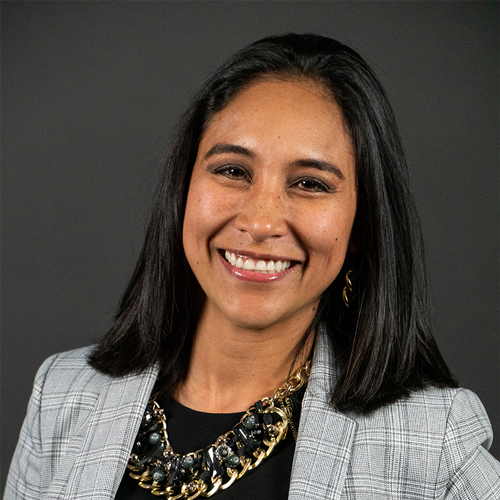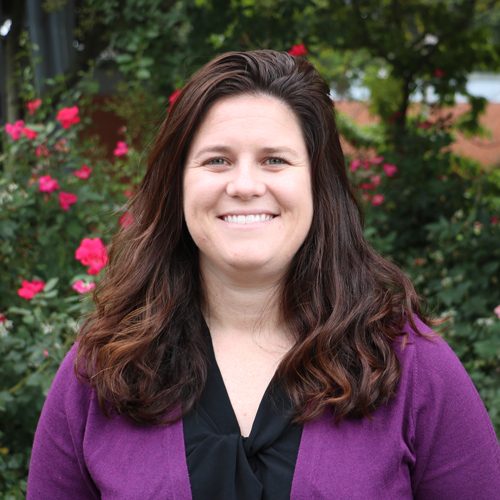BY REBECCA NAGY
This week is National Engineers Week and February 21 is Introduce a Girl to Engineering Day. Today we’re catching up with two of our faculty on how they were introduced to engineering and how we can continue to encourage girls to pursue this field.


Dr. Daniela Jones is an assistant professor in BAE. She earned her Ph.D. in Biological and Agricultural Engineering with a concentration on energy systems from Texas A&M University, where she was an Alfred P. Sloan Fellow and received a certificate in Business Management. She received her Masters and Bachelor of Science degrees in Industrial Engineering with an emphasis in operations research and a Minor in Mathematics from Mississippi State University. She interned at Idaho National Laboratory and collaborated with multidisciplinary teams at Oak Ridge National Laboratory through her work on biofuels and renewable energy. Before this role, she was a postdoctoral associate at Duke University, where she performed quantitative and qualitative research on student interventions and supports programming of educational, career development workshops and community development events for underrepresented undergraduate and graduate students in the biosciences.
 How were you introduced to engineering?
How were you introduced to engineering?
When I was little, I used to question “why” and “how” to everything that surrounded me, math was my friend and I was always very good at puzzle competitions. Little did I know that those were signs that I was destined to become an engineer. I was introduced to engineering at an early stage with puzzles and math and I wish I knew that back then.
How can we encourage girls to pursue engineering?
We have a great need to demystify what engineering really is, the profession that solves day-to-day problems. If we explain it to kids that engineering is about solving puzzles, building things, and making things work better or simplify systems or products, then perhaps we can get them excited about pursuing a degree in engineering. And, to be able to encourage girls in particular, we need them to see us, women in STEM fields. The importance of representation is key to increasing the pipeline and letting them see how they too, can become engineers.
Dr. Laura Merriman is an assistant professor in BAE. Dr. Merriman received her Ph.D. and M.BAE in Biological and Agricultural Engineering from North Carolina State University with the support of a National Science Foundation Graduate Research Fellowship. She completed her undergraduate studies in Biosystems and Agricultural Engineering at Oklahoma State University. Before joining the Department of Biological and Agricultural Engineering in August 2018, Dr. Merriman spent 2.5 years playing in the rain as a water resources engineer with a consulting firm in San Diego, California. During this time, she was involved with a variety of projects, such as investigating pollutant sources and pathways in watersheds, identifying data gaps, and recommending monitoring and engineering desktop analyses needed to perform modeling tasks; implementing low impact development and green infrastructure strategies; designing retrofits for existing stormwater drainage systems; and providing maintenance and/or rehabilitation recommendations to clients. Dr. Merriman is a registered Professional Engineer in North Carolina.
 How were you introduced to engineering?
How were you introduced to engineering?I grew up in a rural part of Oklahoma, where most students who demonstrated skills in science and math were automatically destined to be medical doctors. That was the pathway. A pathway I did not want; the sight of blood would have me faint on the spot. During a tour of Oklahoma State University as a high school senior, I met an awesome adviser in the College of Engineering who opened my eyes to the great world of engineering. After wandering around the architecture and mechanical engineering disciplines for a couple of years, I finally found my home in the Biosystems and Agricultural Engineering Program, where I could meld my loves of science, math, agricultural, and water resources into one awesome degree program.
How can we encourage girls to pursue engineering?
It’s important to demonstrate all the different types of engineering. There are some engineers who build things like bridges, buildings, cars, and drones. There are some who are engineering human tissues for medical procedures or sequencing microbiomes to help our food grow more efficiently. There are some who are helping develop new bioenergy sources or helping mitigate flooding during storm events. There are even some like me who are lucky enough to get to play in the rain and mud and get paid for it! Let’s show our young female generations all the possibilities that out there and then support them like crazy when they want to go dance in the rain.
